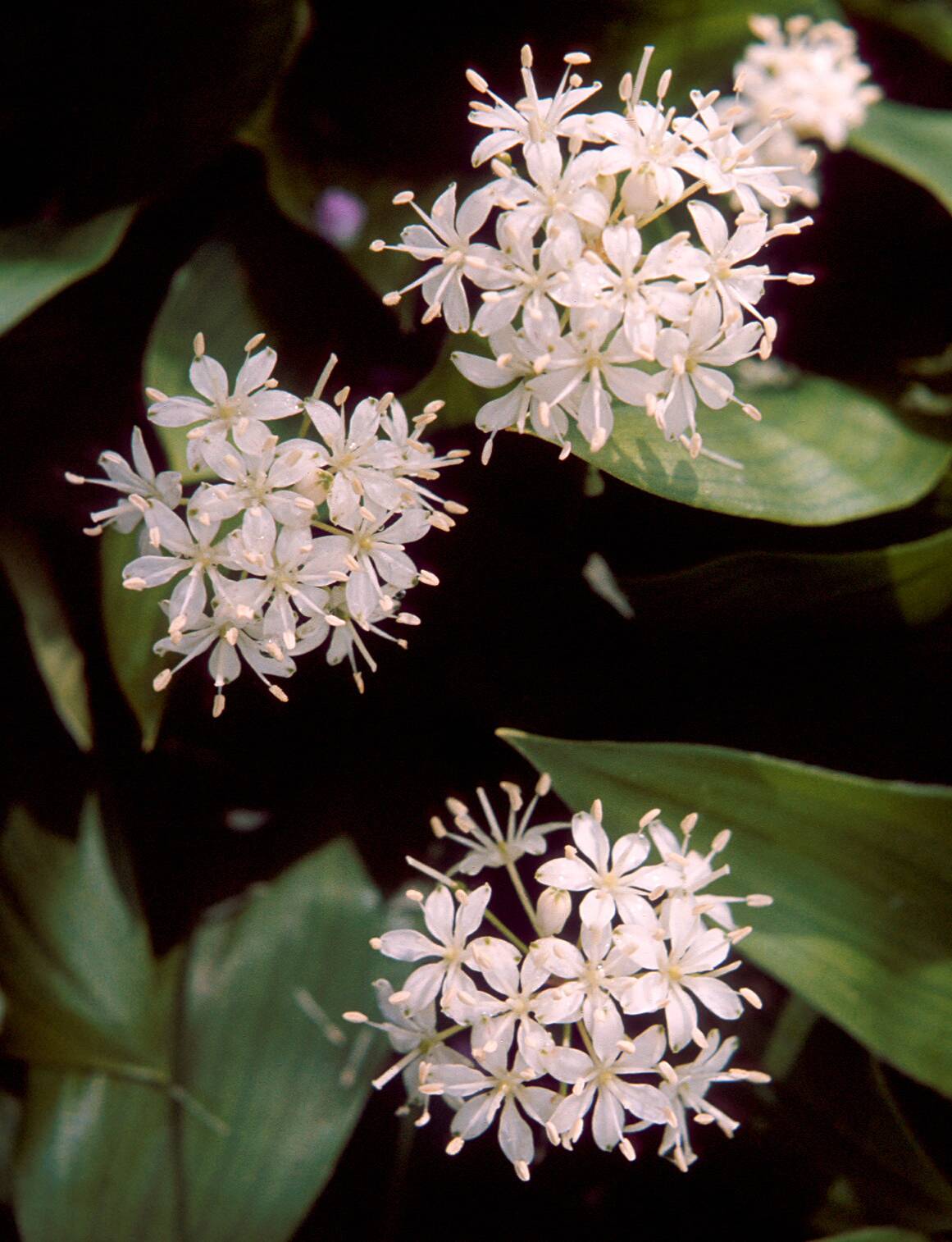
|
Family: Liliaceae |
Herbs, perennial, rhizomatous, 1.5-8 dm; rhizomes bearing thin, fibrous roots. Leaves: basal 2-6, arising from rhizome crown, sessile, sheathing, hyaline, chaffy in age; cauline petiolate, blade with central vein prominent basally, obovate to oblanceolate, weakly villous-pubescent, base attenuate to cuneate, margins entire, apex acute to abruptly short-acuminate, often mucronate. Inflorescences terminal, in short racemes or umbellike clusters, 1-45-flowered, bracteate; bracts foliaceous or linear. Flowers: tepals caducous, 6, distinct, obovate to narrowly oblanceolate, nectaries present, sometimes obscure; stamens inserted at perianth base; filaments dilated, basally pubescent; anthers oblong-obovate to oblong-linear, semiversatile, extrorse; ovary superior, 2-locular [3-locular], ovoid to subcylindrical, glabrous, ovules 2-10 per locule; style columnar, compressed laterally; stigmas weakly 2-lobed [3-lobed]; pedicels unequal, elongate and ascending with age. Fruits baccate, metallic blue to black, 4-30-seeded, ellipsoid to ovoid, smooth. Seeds shiny brown, round abaxially, angled with 2 or 3 faces. x = 7. Eastern and western Native Americans used Clintonia as an eye and heart medicine, as well as a dermatological and gynecological aid (D. E. Moerman 1986). Counts of 2n = 28 are known in all Clintonia species except for a recently discovered sympatric diploid cytotype (2n = 14) in C. udensis (Li S. F. and Chang Z. Y. 1996; Li S. F. et al. 1996). It appears therefore that the Clintonia karyotype has an ancient allopolyploid origin and that the generic base number should be viewed as x = 7 and not x = 14. Based on these karyological data, an early eastern Asian and North American divergence with speciation and polyploidization occurring in North America is postulated. M. N. Tamura (1998c) included Medeola and Clintonia in the tribe Medeoloideae within a narrowly defined Liliaceae, and molecular analysis supports the association of those two genera (K. Hayashi et al. 1998, 2001; M. F. Fay and M. W. Chase 2000).
Fls perfect; tep 6, distinct, narrow; stamens 6, inserted at the base of the perianth; filaments slender; anthers oblong, laterally dehiscent; ovary superior, 2-3-locular, with 2 or more ovules per locule; style long and slender; stigma obscurely lobed; fr a berry with few-several seeds; rhizomatous herbs with 2-5 ample basal lvs, the bases of which sheathe a lfless erect scape bearing a determinate umbel of showy fls. 6, N. Amer. and e. Asia. Gleason, Henry A. & Cronquist, Arthur J. 1991. Manual of vascular plants of northeastern United States and adjacent Canada. lxxv + 910 pp. ©The New York Botanical Garden. All rights reserved. Used by permission. |
This project was made possible in part by the Institute of Museum and Library Services [MG-70-19-0057-19].
Powered by Symbiota



